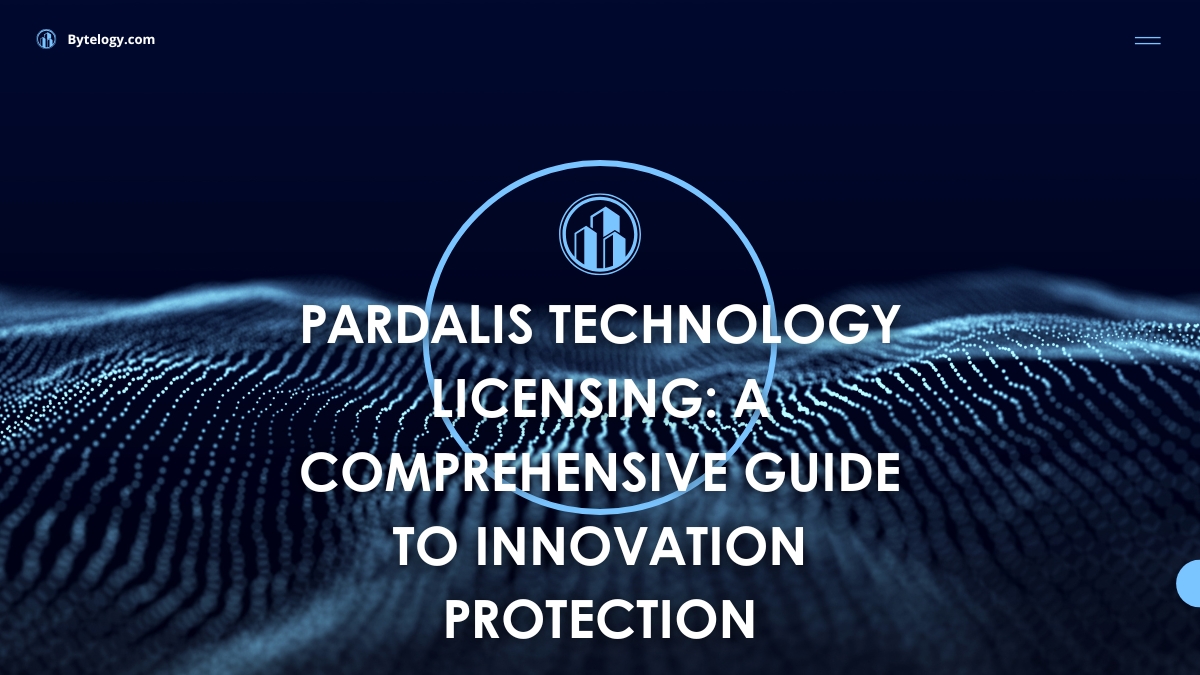Modern digital business needs strong protection of intellectual property since the pace of innovation surged to unprecedented heights. Technology licensing stands as an optimal approach to protect innovations while simultaneously bringing in monetary returns from them. Pardalis Technology Licensing offers businesses two essential benefits at the forefront of development: protected exclusive innovations and increased revenue potential.
Grasping the Concept of Technology Licensing
Technology licensing is an authorization system through which the technology owner grants business access to patented work or trade secrets under defined terms. Through this approach businesses secure their intellectual property rights while simultaneously promoting market-based cooperation and advancement.
Pardalis Technology Licensing provides a standardized platform for organizations wanting to license their innovations successfully. By employing their knowledge, organizations may guarantee their ideas are legally protected while benefiting from market development and income creation.
Pardalis Technology Licensing Advantages
- Technology owners may generate income by licensing their intellectual property rather than engaging in direct production or distribution.
- Accelerated market penetration and worldwide reach are possible outcomes of licensing partnerships with well-established businesses.
- Risk Mitigation: Licensing agreements can lessen financial risks involved with product development and commercialization.
- Fostering Technological Advancements and Industry Growth: Licensing encourages innovation by providing a legal framework for sharing inventions.
- Legal Protection: A properly drafted license agreement safeguards intellectual property rights by prohibiting their unlawful use or violation.
Types of Technology Licensing
Technology licensing agreements might vary depending on the terms and circumstances specified by the IP owner. Some popular categories include:
1. Exclusive Licensing
An exclusive license offers a single licensee the rights to exploit the technology inside a certain market or area. This sort of licensing limits the IP owner from extending identical rights to other businesses.
2. Non-Exclusive Licensing
In this instance, the technology owner permits other companies to utilize the intellectual property concurrently. This strategy is prevalent in businesses where mass adoption is sought.
3. Sole Licensing
Sole licensing permits just one licensee to utilize the technology, but the IP owner maintains the right to use it as well. This hybrid paradigm blends exclusivity and control.
4. Cross-Licensing
This happens when two firms swap technological licenses to profit from one other’s advances. It is popular in sectors such as telecommunications and medicine.
The Licensing Process with Pardalis Technology Licensing
Securing a technological license demands a smart strategy. Pardalis Technology Licensing follows a systematic approach to guarantee that all legal and economic elements are handled.
- IP Assessment: The first phase entails identifying and analyzing the intellectual property to be licensed, ensuring it retains considerable market value.
- Agreement Drafting: A license agreement is produced, defining rights, limits, length and payment conditions.
- Negotiation: Both sides engage in discussions to agree terms that suit both the licensor and licensee.
- Implementation: Once agreed upon, the licensee may utilize the technology as per the contract, with periodic compliance checks.
- Monitoring and Enforcement: The licensor checks compliance and takes legal action against unlawful usage if required.
FAQs
Q1: What industries gain the most from technology licensing?
A: Industries such as pharmaceuticals, software, manufacturing, telecommunications and biotechnology get major benefits from licensing arrangements.
Q2: How does technology licensing vary from selling intellectual property?
A: Licensing enables the IP owner to maintain ownership while offering use rights, while selling gives total ownership to another company.
Q3: What variables impact license agreement terms?
A: Factors such as exclusivity, region, royalty rates, length and allowable use substantially affect license terms.
Q4: How does Pardalis Technology Licensing assure legal compliance?
A: They give skilled legal counsel, write through agreements and monitor compliance to preserve IP rights successfully.
Q5: Can startups gain from technology licensing?
A: Absolutely! Startups may leverage licensing to get innovative technology without substantial R&D expenses, boosting their market entrance.
Q6: What are the typical hurdles in technology licensing?
A: Common problems include IP value disputes, contract negotiations, compliance enforcement and competition concerns.
Q7: How can I get started with Pardalis Technology Licensing?
A: You may begin by engaging their specialists, who will appraise your IP, design licensing options and lead you through the agreement process.
Conclusion
Pardalis Technology Licensing provides a complete solution for enterprises and inventors wishing to secure and market their intellectual property. By employing their experience, firms may negotiate the difficulties of licensing while assuring ongoing development and profitability. Whether you are an innovator, a startup or an established corporation, using technology licensing may uncover new possibilities and push innovation ahead.

